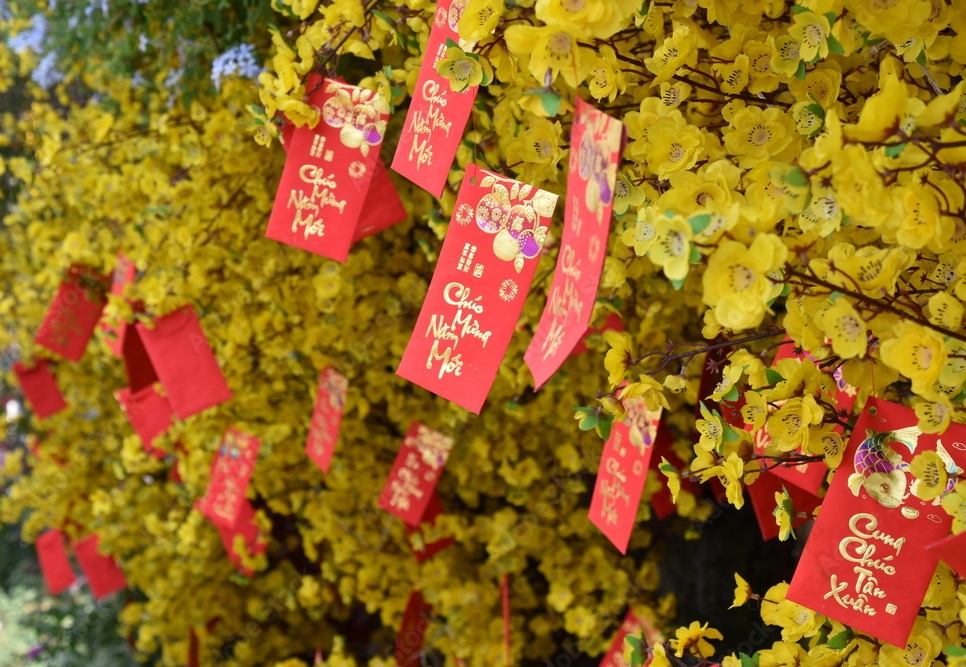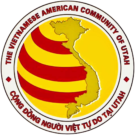
Tết Nguyên Đán – Vietnamese Lunar New Year
Tết is the Vietnamese New Year celebration, which happens every year between January and February. This Lunar New Year holiday celebrates the coming of spring and is an important time for people to spend with family and friends.
What is Tết?
Tết is the commonly used name of the Vietnamese New Year, it is short for Tết Nguyên Đán which means ‘Festival of the First Morning of the First Day.’ It is also called the Spring festival or Lunar New Year.
While there are similarities between the Vietnamese Lunar New Year and the Chinese Lunar New Year, they should not be confused as these are different holidays with their traditions. According to historical archaeological relics around the Red River Delta, Vietnamese people have celebrated Tết since the XVIII century B.C, under the influence of Chinese New Year. Throughout time and different developments, these two countries have their ways to celebrate this crucial holiday. The Lunar New Year is celebrated in many Asian countries including Singapore, Malaysia and South Korea. Each country has their special way to mark the new year.
Vietnamese Lunar New Year is the most important public holiday in the Vietnamese calendar, with celebrations taking place over three days, but many people celebrate for up to a week. This is similar to the importance of the Christmas and New Year celebration period in the UK. Many people take this time to travel home, be with their families and see friends.
According to Dongfang Shuo, a famous scholar in Han Dynasty, 8 days celebrating Tet are matched with 8 crucial creatures that God had created: the first day is for chickens, the second is for dogs, pigs were born in the third, the fourth is for goats, then buffaloes, horses, and the seventh day is the day human was born, finally God created cereal in the eighth day.
Tết celebrates the new year and the start of spring and takes place between mid-January to late February. It changes every year depending on the Vietnamese lunar calendar and the first new moon. One reason this festival is so important is that the Vietnamese people believe the way they spend the first day of the new year will represent how the rest of the year will go.
When is Tết?
Tết takes place at a different time each year depending on when the first new moon is in the lunar calendar. However, this is typically between mid-January and late February. Here are 12 recent and upcoming dates for the Vietnamese Lunar New Year:
- January 29, 2025
- February 17, 2026
- February 7, 2027
- January 26, 2028
- February 13, 2029
- February 2, 2030
- January 23, 2031
- February 11, 2032
- January 31, 2033
- February 19, 2034
- January 22, 2035
- February 10, 2036
The Vietnamese Lunar New Year may sometimes be celebrated on a different day than other countries that also celebrate the Lunar New Year. This is because of different time zones, the Lunar New Year is celebrated exactly on the day of a new moon.
Why is Tết so important?
This celebration is the most important Vietnamese national holiday. Many people travel to be with their families, spending quality time together and paying homage to their ancestors. Many businesses will close and companies will give their workers time off to allow as many people the chance to be with their loved ones. Employees that have to work during this period get three times their usual pay for doing so.
The family focus of the holiday is one of the reasons Tết so important, but it’s also a very symbolic holiday. The Vietnamese New Year involves many traditions to do with starting afresh and trying to begin the new year with good fortune. It’s thought that your actions during Tết will reflect how the rest of your year will go. So, celebrating well is very important!
Other holidays during the Vietnamese calendar start with ‘Tết’, which means festival. However, it is the New Year celebration which is most important to the Vietnamese people which is why it has a shortened name. The second most important festival is Tết Trung Thu, also known as the Mid-Autumn Festival or Children’s Festival. But if you just say Tết everyone will know you are talking about the Lunar New Year.
Another fact about the Vietnamese New Year is that this holiday represents the psychological and cultural aspects. It’s not only the gathering season, Vietnamese New Year is a special occasion for the public to express their gratitude towards the upper Gods, therefore maintain a harmonious relationship with The Upper Sky God, which is Trời (Thiên), and Mother Earth, or Đất (Địa). We can see this through lots of myths in Vietnam, for instance, The Myth of Squared and Rounded Sticky Rice Cake. In this story, Lang Lieu, one of the Hung Emperor’s sons, invented two types of cake made from rice, to demonstrate the close bond between human beings and the Spiritual Gods: The solid Squared Rice Cake represent Mother Earth, while a rounded, white cake is a symbol for The Upper Sky.
How is Tết celebrated?
There are many different traditions and ways of celebrating the Vietnamese New Year. Some traditions vary in the different regions of Vietnam, and families will have their special ways to celebrate the holiday.
Typically, Tết is celebrated over three days the day before New Year’s Eve, New Year’s Eve and New Year’s Day. However, many preparations are made in the run-up to the holiday and festivities can last up to a week. So, there’s lots of time to celebrate and take part in many traditions!
Here are some traditions that are commonly observed during the Spring Festival:Cleaning
An important aspect of the Vietnamese New Year is that it is viewed as a fresh start. In preparation for Tết, families clean their homes a week before the holiday starts. Households will do very deep clean chores such as washing mattresses, sorting through their belongings and even repainting the house. This is seen as a symbolic way of clearing out the home of any bad luck from the previous year, to make way for good luck in the new year. Sweeping during the Lunar New Year is considered taboo as it represents brushing away good luck that you want to welcome in.
Before the holiday, families will also clean the shrines of their ancestors. The shrines will be decorated with photos of past family members, burning incense and leaving offerings of fruit and flowers. This tradition is an important aspect of Tết to worship ancestors.
Plus, cleaning the house isn’t just good luck it is also a way to welcome and honor guests and family members visiting for the holiday. And families can feel proud of their beautiful homes.
Food
Food is an important aspect of Tết traditions. The festival wouldn’t be the same without indulging in delicious delicacies and sharing traditional Vietnamese food with family members.
Bánh chưng is a popular dish, it is a square sticky rice cake filled with mung beans and pork. To be cooked, bánh chưng is boiled for several hours while wrapped in Phrynium leaves which give it a fragrant flavor. This is a key Tết food as it is also very symbolic, representing the Earth and is also placed on family altars to honor ancestors.
Following the tradition of visit your families and friends, It is common in most households during Tết to have a box of dried candied fruit, also known as ‘mứt’, serving at the greeting table. These boxes are sometimes given as gifts to friends and family. They are filled with a variety of sweet treats such as candied ginger, coconut and butternut squash. People can have these lip-smacking snacks while talking and enjoying their conversations.
After the cleaning of the ancestral altar, an offering of fruit is made. Families will place a tray filled with five different fruits on the shrine as an expression of gratitude and wishes for prosperity. The five fruits included vary in different regions and families, but typically have things like mango, banana, orange and dragon fruit. It is important that the fruits are different colors and also consideration is given to what they symbolize.One of the traditional way to welcome the good fortune is to display the fruit bow which has 5 different fruits: custard apple or soursop, some figs, coconut, papaya and mango. In Vietnamese these words will make a sentence, Cầu Sung Dừa Đủ Xài, which is a wish for prosperity, more money will come and less money will go waste.
Decorations
Lanterns are a common Vietnamese decoration for all sorts of holidays and celebrations. However, during Tết red lanterns are most popular as this is a lucky color.
Flowers and plants are an important part of decorating for Tết. In Northern Vietnam, branches of peach blossoms are very traditional decorations, representing wealth, luck and happiness while in Southern, a mesmerizing yellow shade from apricot blossoms will bring in the fortune we wish for. Often they will be in a large vase and decorated with red envelopes and emerald jades . Other flowers will also decorate people’s homes. Orchids are a popular choice as they look very elegant and represent good luck.
What is the Vietnamese Zodiac?
The Vietnamese lunar calendar follows a 12-year cycle and each year is represented by an animal. These are the 12 animals of the Vietnamese Zodiac and their years in the current calendar cycle:
- Snake (Tỵ) 2025
- Horse (Ngọ) 2026
- Goat (Mùi) 2027
- Monkey (Thân) 2028
- Rooster (Dậu) 2029
- Dog (Tuất) 2030
- Pig (Hợi) 2031
- Rat (Tý) 2032
- Buffalo (Sửu) 2033
- Tiger (Dần) 2034
- Cat (Mão) 2035
- Dragon (Thìn) 2036
The Vietnamese Zodiac is similar to the Chinese Zodiac but with two differences. In the Vietnamese Zodiac, there is a water buffalo and a cat. In the Chinese Zodiac, these are an ox and a rabbit respectively. We can see this is a honorable mention for the water buffalo and the cat. These animals are considered to be excellent household friends that make a great contribution to agriculture.
